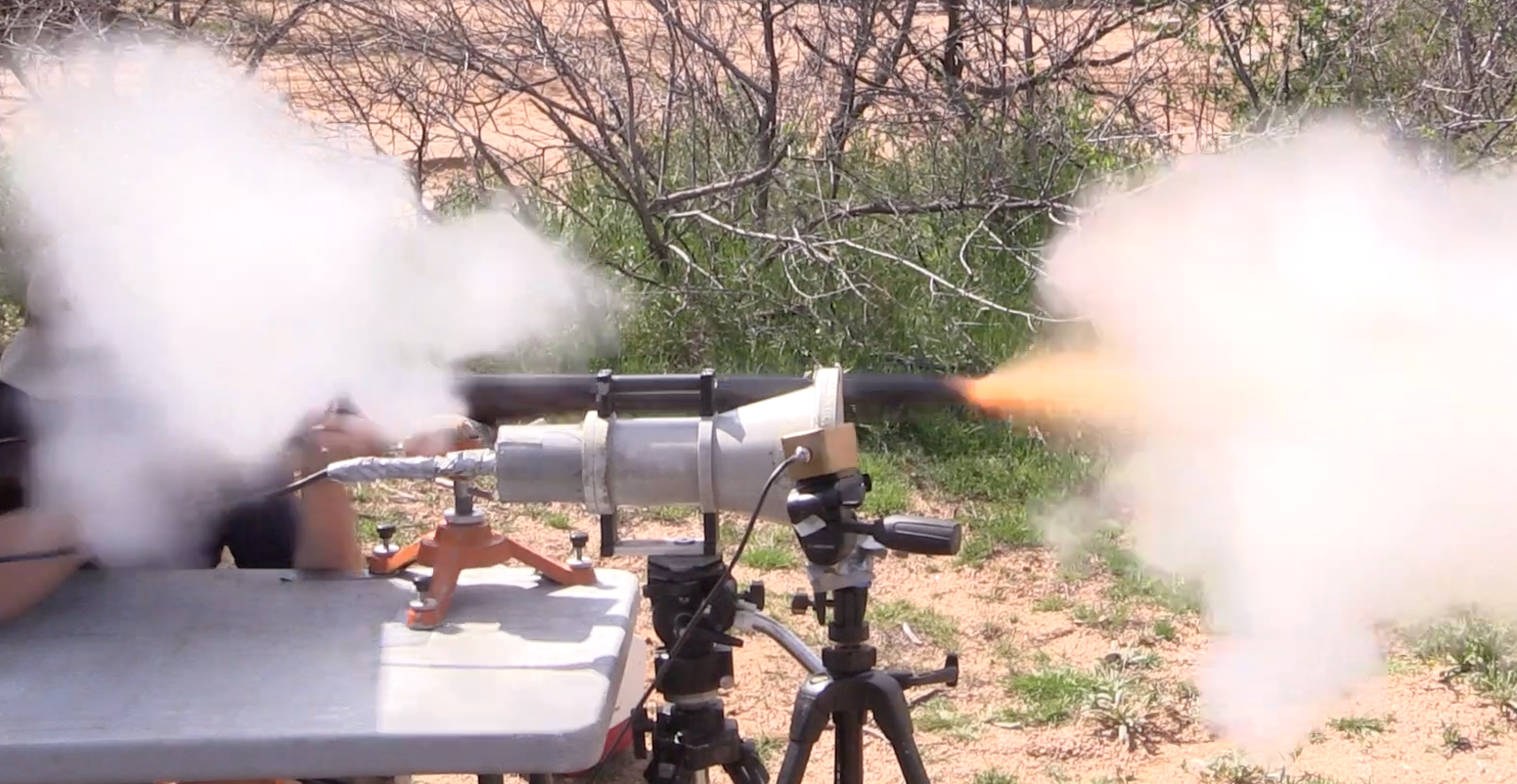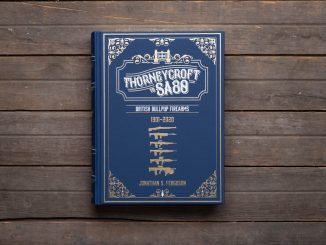The very early production MkI Bren light machine guns were made with two dovetail brackets on the left side of the receiver. The rear one was for the standard rear sight, and the front one was to accommodate two types of optical sights. A mounting for the No.32 telescopic sight (the same one used not he No4(T) sniper rifle) was planned, but never produced. What was made in small numbers by the Plessey company was a “fixed line sight”. This was really more like a surveyor’s tool than a traditional sight, and it used the same optical element as the Vickers dial sight that was introduced alongside it in 1939. The purpose was to allow a tripod-mounted Bren to be set up with specific limits to its field of fire, and then for the gun to be removed, used on the bipod elsewhere, and returned to the tripod and confirm the field of fire, especially in the dark. This is a somewhat technically complex task, but not one that was actually needed very much for the Bren. As a result, production and use of the fixed line sights was very limited, and the sights are extremely rare today. The mounting bracket on the Bren receiver was rather quickly dropped from production as an unnecessary waste of machining time.
Related Articles

Flintlock
Firing a 10-Bore Flintlock Rifle (Video)

Heavy MGs


As an owner of 2 British Motorcycles from the 1960’s, I had a less then stellar opinion of the manufacturing ability of companies from the U.K. But as I am tutored by Ian on the development of British firearms I understand the Brits were very capable of producing quality items.
Riddle:
Why do Brits drink warm beer?
Because they have Lucas refrigerators!
Lucas, aka. “the Prince of darkness”
British ales are not served warm. They are served at cellar-temperature and are brewed for that.
I know that and I live in Aussie.
Repeating crap?!
These gizmos are proof that the british tried to outmatch the germans regarding pointless overengineering …
This is the legacy of the machine gun’s artillery heritage. Machine guns were once part of the field artillery and not truly an infantry weapon. I’m oversimplifying things, but at one time even the Maxim gun was mounted on an artillery carriage complete with large wheels. The evolution from being mounted on a cannon carriage to being something that one soldier could haul around on the battlefield and from being an indirect fire area weapon to direct-fire used on point targets is reflected in aiming instruments such as the tripod with transverse and elevation gear and by sights such as Ian demonstrated in this video.
Even during World War 2, Soviets continued using Russian-built Maxims on low, two-wheeled carts, because a Maxim was too heavy for one man to move across the battlefield.
Though I’ve seen pictures of single men doing it… On their back, in snow.
If the British Army was anything like the USN, I can imagine countless FNGs sent to find SGT (“Sergeant” being a much more common use of that abbreviation than “sight”) F.L. Bren.
Not knowing a thing about surveying, might anyone explain to me what the increments on the sight are set up in relation to? A fixed line on the ground? A compass point? The position of the tripod once fixed? And how does any army set up an aiming point with a signal lamp at night when expecting the enemy to arrive shortly?
1. In laying out pre-registered fire, lines are drawn on the map, oriented to the terrain with a compass, and aiming stakes are set up.
2. The sights are then “dialed in” on the lines of the aiming stakes.
3. At night, the usual method is to have the aiming stakes with fluorescent paint on the side facing your position; if no such paint is available, strip of white surgical tape will do.
4. In the old days, a “dark lantern” was often used;
https://i.pinimg.com/originals/4f/ec/6b/4fec6b034784cea6d00193304b5896d2.jpg
This is simply a regular kerosene lantern with a sliding shutter that allows its light to be seen only from one side. You naturally slid it open only on the side facing your gun position.
About the only way the enemy would notice it if properly camouflaged (like sticking it next to a bush) would be if their either tripped over it or smelled it.
cheers
eon
Why didn’t somebody come up with a water-jacketed barrel for the Bren? Who says somebody didn’t?
That would have made it too heavy to use as a light machine gun. Add the water jacket and you will also need a source of water, along with a condenser tank, a hose, a tripod (as the bipod will get crushed by the extra weight), and a need for two more soldiers to drop their weapons and service the gun. Since the Bren is fed by magazines, your proposal will be an awkward arrangement. I could be wrong.
Brit Infantry doctrine in the 1930s when the Bren was first issued and the service rifle was a bolt action SMLE variant, was to conceal the presence of an automatic weapon and ammunition by firing single shots and engaging with the Platoon Stokes mortar, holding the enemy in position while the rest of the Platoon/Section flanked the enemy, with the emphasis on marksmanship rather than weight of fire, until Command ordered auto fire. Sustained full auto fire was discouraged as it increased ammunition expenditure and barrel changes could take the Bren out of use when needed. Heavy MG requirement was covered by the Vickers heavy MG capable of continuous fire for hours.
One LMG did have a water jacket. The French Berthier of 1908;
http://www.ibiblio.org/hyperwar/USN/ref/MG/I/img/MG-1-121-87.jpg
Chambered in 8 x 50Rmm Lebel (note the curved 30-round magazine)it was gas-operated, with the gas piston on the right side rather than in the customary position under the barrel.
The water-cooling system circulated by the assistant gunner industriously and rhythmically “pumping” the two rubber bellows on the ends of the tubes, to move the water back and forth through the spiral casing around the barrel.
Other than the assistant gunner developing arm strength rivaling that of the Welsh longbowmen at Crecy and Agincourt, I don’t really see the advantage of this setup over a quick-change barrel system.
Other than this peculiarity, the Berthier was actually quite a workmanlike piece of equipment. Some of its more reasonable features later showed up in the Vickers Berthier MK III.
cheers
eon
“One LMG did have a water jacket. The French Berthier of 1908;”
Wait. Kulsprutegevaer Fm/Kjellman
http://www.gotavapen.se/gota/artiklar/kg/swedish_kg1.htm
is not LMG? If not then what it actually is?
Well, the Kjellman wasn’t exactly battle tested. So, yes, it is a light machine gun, but whether it would have been effective is now moot.
The only version of the Kjellman I was familiar with is the tripod mounted, belt fed HMG, on which a water jacket makes perfect sense.
On a box magazine fed LMG, which by definition is pretty much incapable of sustained fire, the main thing a water jacket does is increase weight, which sort of makes nonsense of the whole idea of a light machine gun.
I’ve long thought that the Swedish Army should have taken a better look at the Kjellman HMG. Seeing the “LMG” version, I can see why they opted for the Madsen instead.
cheers
eon
In the late 1960`s they were piles 0f them brand new in scrapyards. I purchased one for
about 30 cents, was this a good investment ?
Using .303 and 7.62 Brens on fixed lines is NOT useless nor pointless.
Britain’s SAS are among the best infantry around and they used both on fixed lines in the Falklands
Accuracy is a good thing for fixed line fire, as ir reliability of a high order.
Experience in the field doesn’t seem too common here.